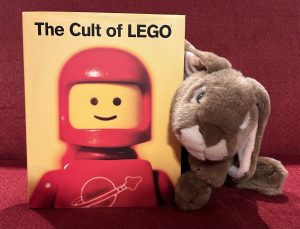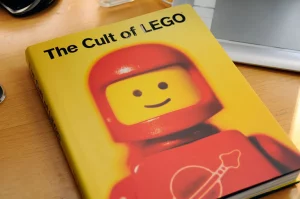 Last week, while indulging in one of my favorite guilty pleasures—what I like to call “soft-stealing” at Barnes & Noble—I stumbled upon a truly captivating book. Now, before you jump to conclusions, “soft-stealing” in this context is nothing more than the harmless act of reading a book cover to cover in the store without making a purchase. Think of it as the bookstore equivalent of snacking on grapes in the grocery store before you reach the checkout line.
Last week, while indulging in one of my favorite guilty pleasures—what I like to call “soft-stealing” at Barnes & Noble—I stumbled upon a truly captivating book. Now, before you jump to conclusions, “soft-stealing” in this context is nothing more than the harmless act of reading a book cover to cover in the store without making a purchase. Think of it as the bookstore equivalent of snacking on grapes in the grocery store before you reach the checkout line.
The book that caught my attention is an absolute gem for anyone who has ever been enchanted by the colorful world of LEGO. Titled “The Cult of LEGO,” this book is a vibrant exploration of the enduring appeal of these iconic plastic bricks. It’s a treasure trove for LEGO enthusiasts and a fascinating read for anyone curious about the broader cultural impact of the toy.

Why “The Cult of LEGO” is a Must-Read
“The Cult of LEGO” is far from your average coffee table book. It delves deep into the adult fascination with LEGO, showcasing how this simple toy has evolved into a medium for complex creativity and engineering. The book spans nearly 300 pages, filled with stunning photos that highlight the limitless possibilities of LEGO.
One of the most intriguing aspects of the book is its celebration of original LEGO creations. We’re talking about intricate designs that go beyond your standard LEGO set—like a fully functional vending machine built with LEGO Technic and Mindstorm pieces. There’s also an awe-inspiring t-rex model, a series of jaw-dropping battleships, and an incredibly detailed spaceport that would make any sci-fi fan’s heart race.

LEGO as an Art Form
As I flipped through the pages, I couldn’t help but think about my own creative experiments with LEGO. One of the first branded pieces I ever made was a LEGO Foogos constructed out of eggs and cheese—a playful nod to the endless possibilities that these little bricks represent. Seeing the creations in “The Cult of LEGO” reminded me that LEGO is more than just a toy; it’s a medium through which people can express their creativity, ingenuity, and even their inner child.
The book also sheds light on the passionate community of adult fans who have taken LEGO to new heights. These are people who see LEGO not just as a pastime, but as a serious hobby and an art form. The level of detail and innovation in their work is nothing short of inspiring.
Conclusion
If you’re someone who grew up with LEGO—or if you’re simply interested in understanding why these bricks have such a universal appeal—I highly recommend picking up “The Cult of LEGO.” Whether you decide to add it to your collection or enjoy it as part of your next “soft-stealing” session, this book is a testament to the creativity and imagination that LEGO has inspired for generations.
So next time you find yourself near a bookstore, consider taking a peek at “The Cult of LEGO.” You might just find yourself rediscovering a childhood passion or appreciating LEGO in a whole new light.
